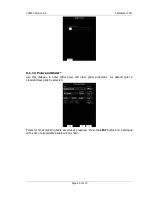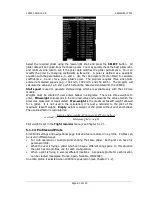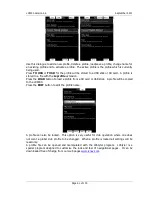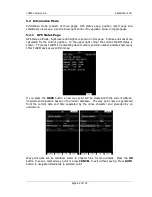
LX9000 Version 2.6
September 2011
Page 50 of 130
5.1.12.1
Vario Settings*
All settings in this menu are related to the glider.
5.1.12.1.1
Electronic Total Energy Compensation
The LX9000 offers two methods of vario TE compensation:
•
TE pitot tube
•
Electronic TE compensation
It is important to note that the method of TE compensation is set up when the
instrument is installed by virtue of the pneumatic connections made to the TE and
static ports. Changing the compensation type in the setup screen below WILL
NOT change the method of compensation - the pneumatic plumbing has to be
changed first (see Chapter 6).
If the TE pitot tube has been connected TE compensation should be set to 0%.
There is no further adjustment of TE compensation possible. Quality of the TE
tube is the one and
only
factor.
If the electronic TE option has been installed TE compensation should be set to
100%.
The electronic TE compensation can be fine tuned during flight using the following
procedure. It is essential that this is only done in smooth air; it is not possible to tune the
TE accurately in turbulent air.
Set TE compensation to 100% and TE filter to default. Accelerate up to approximately
160 km/h (75 kts) and keep the speed stable for a few seconds. Gently reduce the speed to
80 km/h (45 kts). Observe the vario indicator during the manoeuvre. At 160 km/h the vario
will indicate about –2 m/s (-4 kts). During the speed reduction the vario should move
towards zero and should never exceed zero (slightly positive indications are acceptable). If
the vario shows a climb the compensation is too low; increase the TE%; and vice versa. Try
another “zoom” to assess the change and make further adjustments if necessary.
The TE filter is the compensation delay and is not used on V5 variometer. Larger numbers
will increase the delay and vice versa. During the first test is recommended to use TE filter
4.
Electronic TE compensation is only effective when the pitot tube and static sources are co-
located and the pneumatic lines to the instrument are approximately the same length. The
















































